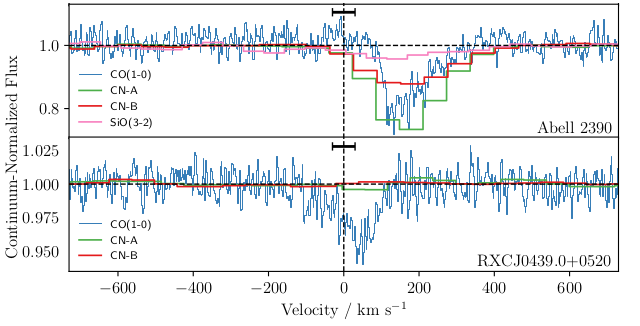CEA News, October 2019
Feeding Super Massive Black Holes at the Centre of Galaxies
The supermassive black holes which lie at the centres of galaxies have long been thought to devour immense amounts of mass from their surroundings. Directly observing this process is extremely challenging and so the precise way in which this happens has been the source of theoretical debates among astrophysicists for many decades.

Recently however, members of the CEA have been working to observe the eating habits of several supermassive black holes for the first time. The black holes in question give off so much energy that they are often surrounded by an extremely compact and bright object called an active galactic nucleus (AGN). Between us and those bright AGN are massive clumps of cold gas, which could well be part of the black hole’s next meal. By looking at the bright AGN with the Atacama Large Millimetre/submillimetre Array (ALMA) telescope, it has been possible to directly detect those cold gas clouds from the shadows cast by molecules within the gas.

A team led by CEA astronomers carried out a survey of 18 bright galaxies at the centre of galaxy clusters, from which they detected cold gas in the core regions of eight using carbon monoxide, cyanide and silicon monoxide absorption lines (shown in the figure here). The temperatures of these molecules being observed can be as low as around 5 Kelvin (-268 degrees Celcius).
The gas clouds they observed in each of those eight galaxies have velocities ranging from 45 km/s away from the black hole, to 283 km/s towards it. Overall, it was found that those cold gas clouds have a tendency to be moving towards the host supermassive black hole, suggesting that they really are getting their energy from devouring huge amounts of mass from their surroundings, something which had been predicted for many decades.

